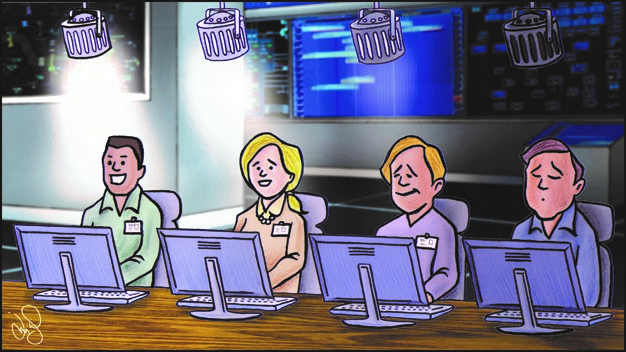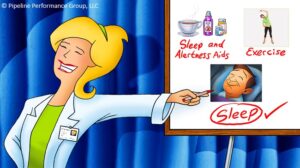Do you prefer a dark control room or one that is well lit? Some of us led a classroom fatigue training session earlier this year. We went into the control room where I performed a human factors assessment in 2008. It was a dark control room then, lit only by the light of the SCADA displays. Now the lights are on. One of the controllers told me it was my fault the lights were on now and he wished it was still dark. I can understand why he prefers that, since I was the same way when I worked shift work. But we were not supposed to turn the lights off. The fact is that most of us don’t want anyone to tell us what to do. I would turn the lights off to reduce the glare and to be more in control of my environment. Guess what would happen? I got sleepier! Does that happen to you?
We work in control rooms with controllers on both day and night shifts. I watch people as their body temperatures drop and they turn the lights down, if that is an option. As they settle more deeply into their ergonomic chairs and zip up their hoodies, it is almost like they close down. Soon their chins drop, and they doze off. It is a natural reaction to want to sleep at certain types during the 24 hour cycle of a day and night. These are the reasons that lighting and temperature controls can be used to increase alertness, even if we do not want it well lit in control rooms. I understand the resistance, but believe keeping the lights on helps increase alertness.
n the 2005 “Pipeline Safety: Countermeasures to Prevent Human Fatigue in the Control Room” advisory bulletin, PHMSA advised companies to use the available information on control room environments to incorporate environmental measures that reduce fatigue and promote alertness, adjust environmental factors to specifically address the problems associated with night shifts and shift rotation schedules, and share information across the industry on environmental factors in control rooms that can affect fatigue and controller alertness. Have you followed the advice?
Light keeps us awake when we are trying to sleep in the daytime at home, so we use block out shades or an eye mask to block the light. That should help us understand why lighting in the control room will help us stay awake. As the gospel song by Blind Willie Johnson tells it, let the light shine on, specifically in the control room.
On a personal note, I have been using light to wake up in the mornings, thanks to a Philips Wake-Up Light With Colored Sunrise Simulation. It is neat! Sarah Purser, our Director of Operations, found it on Amazon when we were looking for fatigue management items.
Set the time you need to get up and the light level gradually increases. It simulates sunrise next to the bed so that you wake more naturally. It does have alarm sounds, but I usually wake up to the light instead of the sounds. At night, the lamp functions with dimming and simulates sunset so that you become drowsier.
Whether we are trying to stay alert at night or to sleep in the daytime, light affects us. Since we do not follow the circadian rhythms that guide us to be awake when it is light and to be asleep when it is dark, we have to rely on artificial lighting in our control rooms and we have to block lighting when we are trying to sleep in the daytime. Sleep as much as possible and stay alert at work. Begin saving daylight March 8.




